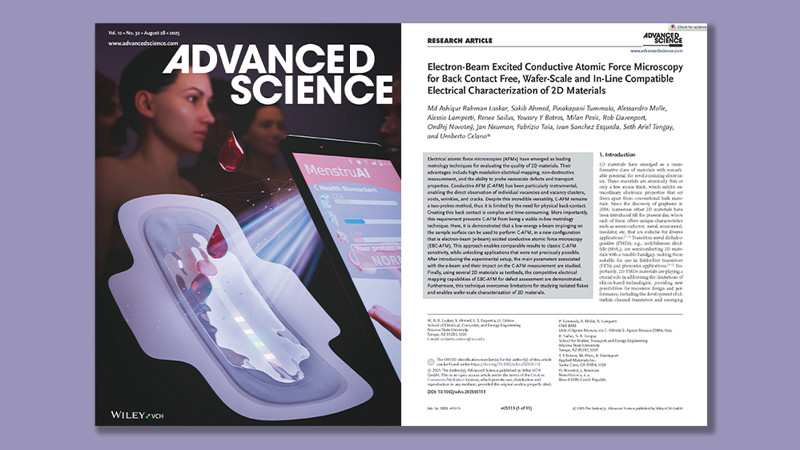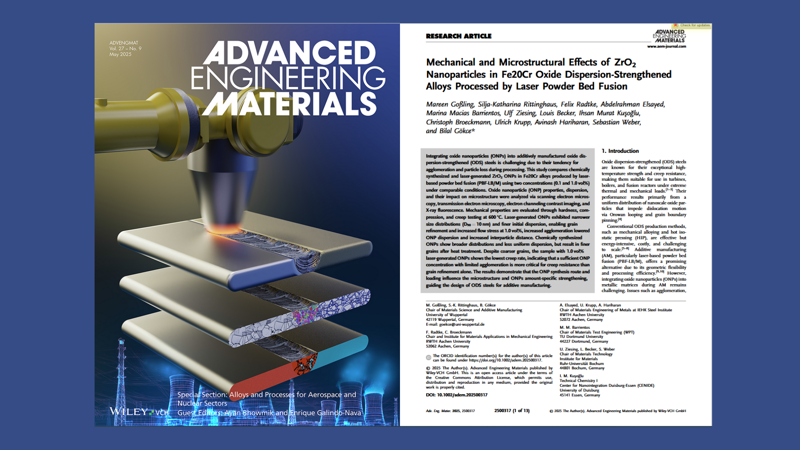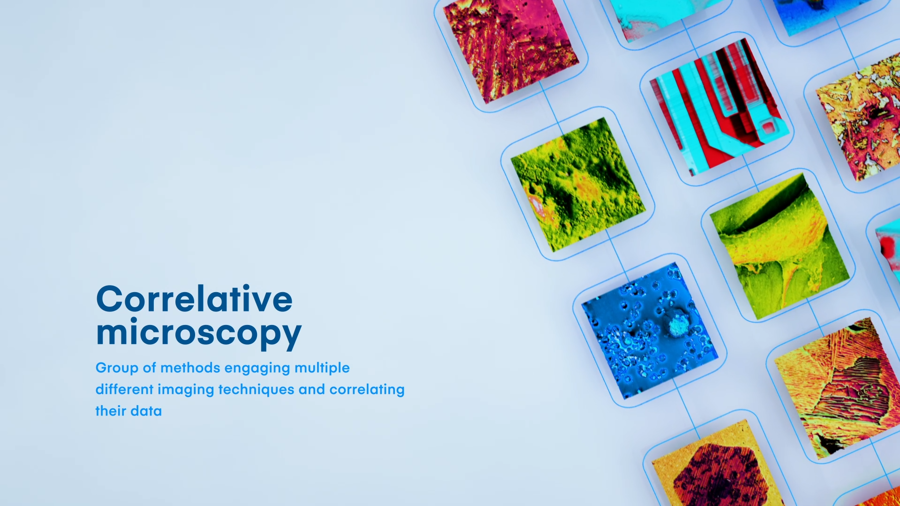Correlative microscopy
Correlative microscopy is an approach that benefits from the imaging of the same object by at least two different techniques. With the ever-increasing demand for complex and more precise imaging, the pressure on the development of new technologies in microscopy is constantly growing. The term refers to a group of methods engaging multiple imaging techniques and correlating their data, which leads to surprising results and scientific discoveries.
Examples of correlative microscopy are many. E. g. Correlative Light and Electron Microscopy (CLEM), often used in the Life Science field, enables obtaining a complete overview of a cell, while at the same time analyze biomolecules in that same cell on the scale of a few nanometers. Other already available examples of correlative microscopy are SEM-Raman, AFM-Raman, SEM-FIB, AFM-SEM, etc.
We are pioneers of in-situ multimodal correlative imaging
The correlation of images from two microscopes can be limited by the difficult localization of the region of interest or incompatibility of data acquired by different instruments under different conditions. To achieve the best results possible, you need to obtain and variety of AFM modalities (AFM, C-AFM, KPFM, MFM) and SEM images (SE, BSE, EBIC, EDX) at the same time, under the same conditions and in a user-friendly way.
This can be achieved by unique CPEM (Correlative Probe and Electorn Microscopy) technology, developed by NenoVision. It represents a combination of complementary AFM and SEM that enables you to use the advantages of both these techniques via LiteScope AFM-in-SEM.
CPEM technology
With the CPEM technology developed by NenoVision, you can easily acquire AFM and SEM simultaneously and correlate them in real time. The CPEM brings new possibilities for advanced correlative imaging in a variety of fields such as Material Science, Nanostructures, Semiconductors, Life Sciences, and many more.
CPEM has been developed for a variety of applications, representing a new patented technology of correlative imaging. It brings a solution synchronizing:
- the scanned area
- resolution and image distortion
- and enables to correlate both acquired AFM and SEM images in a real-time
See also

Want more info? Feel free to...

LiteScope Contributes to Study on Creep Behavior and Microstructure Evolution in Advanced Alloys
A recent study published in the Journal of Materials Science investigates the microstructural evolution and creep behavior of recrystallized FeCr-based alloys. The work combines multiple correlative microscopy techniques to provide a comprehensive view of grain structure, crystallite size, and surface topography.

LiteScope Featured in a Breakthrough Study on Electron-Beam-Excited Conductive AFM
A new study has succesfully demonstrated Electron-Beam-Excited Conductive AFM (EBC-AFM) on semiconductive 2D materials – an approach that removes the need for back-contact and time consuming sample manipulation required with traditional conductive AFM. Instead, the SEM’s electron beam generates charge carriers that close the circuit with the AFM tip, making it possible to carry out fast, non-destructive electrical mapping of 2D materials, including full wafers.

ZrO2 Nanoparticles in Fe20Cr Oxide Dispersion-Strengthened Alloys Processed by Laser Powder Bed Fusion
The study investigates oxide nanoparticles (ONPs), specifically ZrO2 nanoparticles in Fe20Cr alloys, produced via laser powder bed fusion (PBF-LB/M), in order to understand how these nanoparticles impact the microstructure and mechanical properties. LiteScope was used for validating Electron Channeling Contrast Imaging (ECCI) findings and to distinguish nanoparticles (ONPs) from pores or preparation artifacts.

